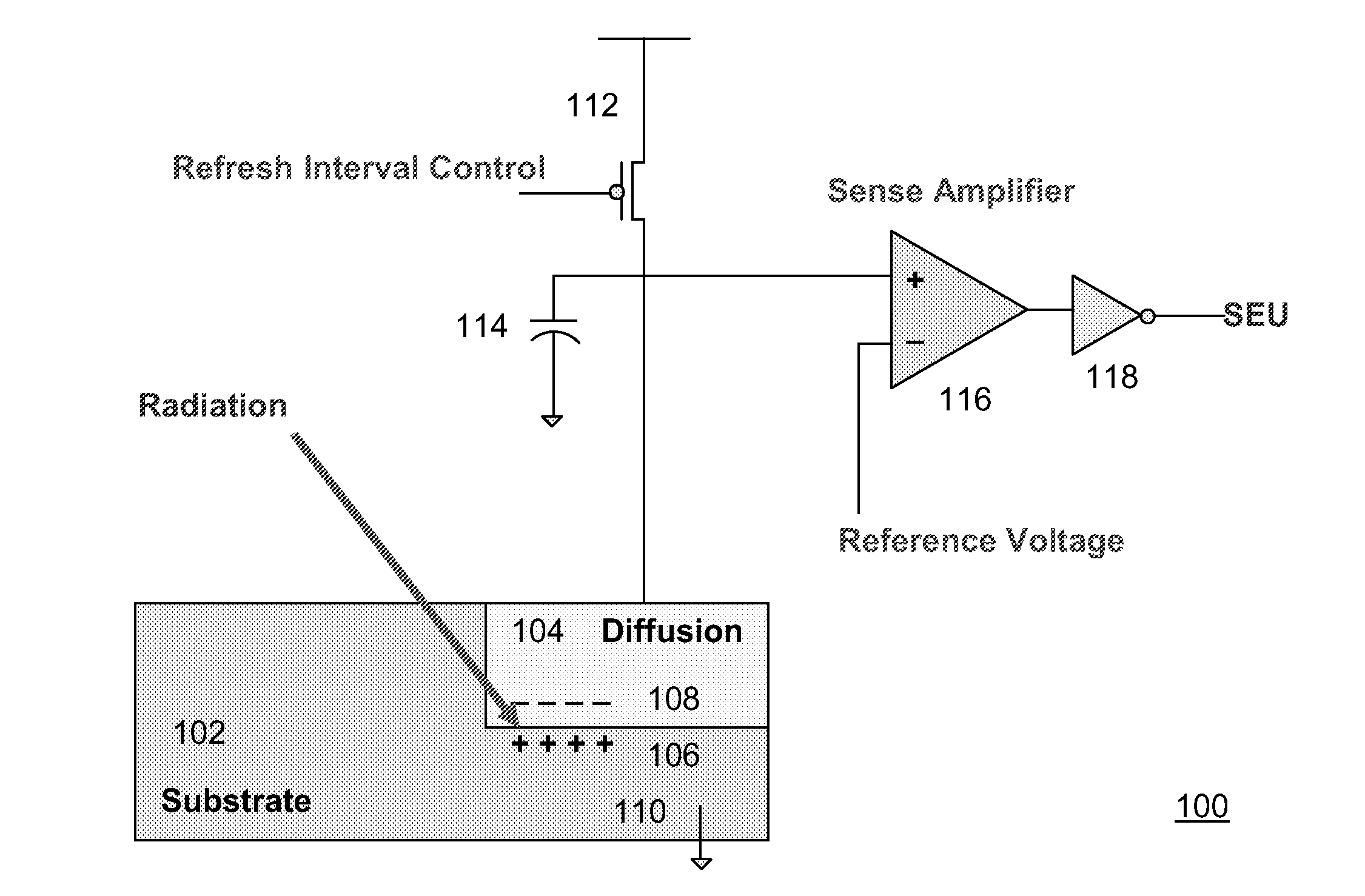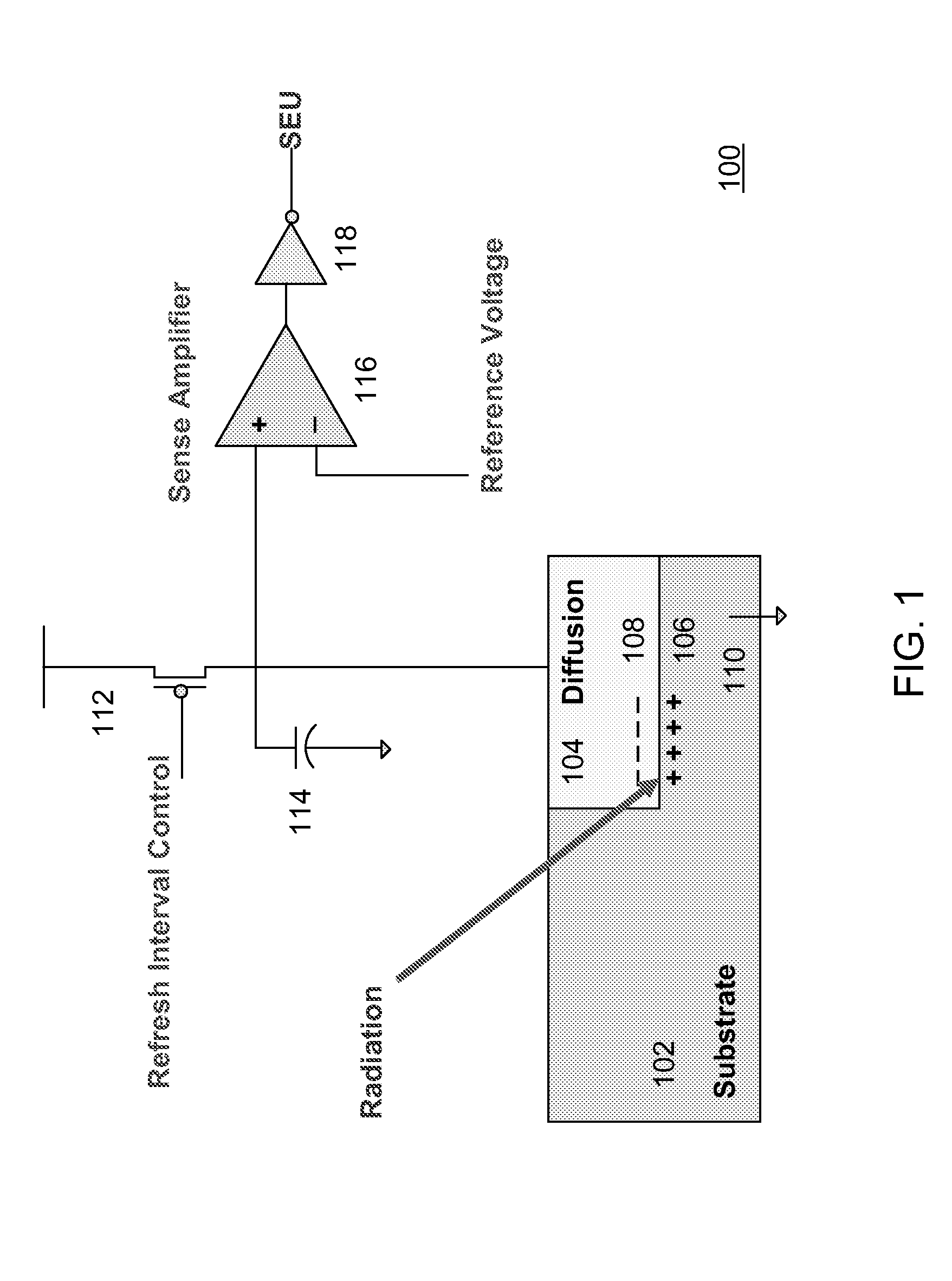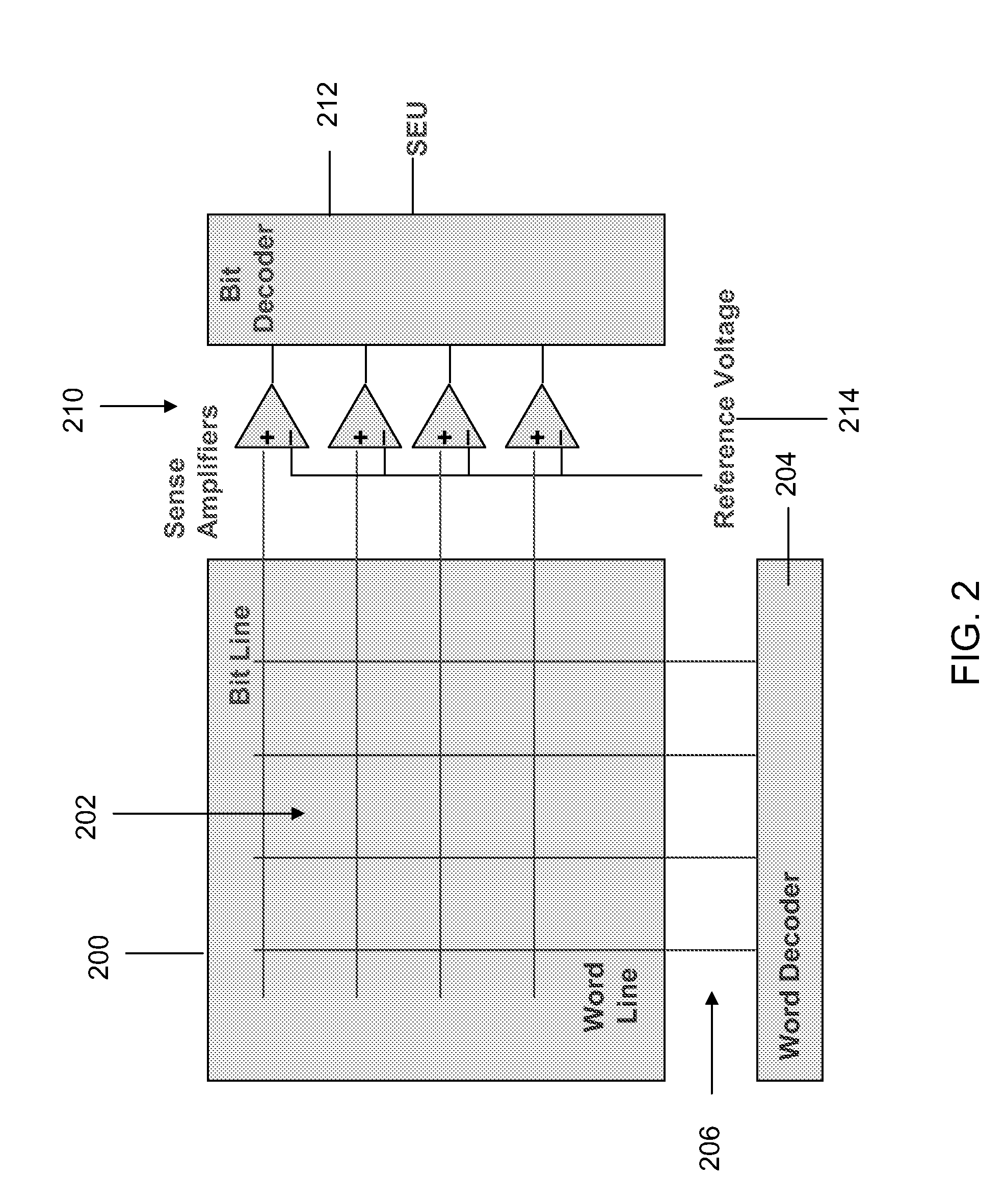Programmable Heavy-Ion Sensing Device for Accelerated Dram Soft Error Detection
a heavy-ion sensing and soft error detection technology, applied in measurement devices, digital storage, instruments, etc., can solve problems such as ser reliability problems, difficult to use life testing as a means to predict hidden seu problems in new technologies, and may have serious consequences for system operation, so as to facilitate and accelerate the mapping of alpha particle activities across the chip, the effect of improving ser modeling capability
- Summary
- Abstract
- Description
- Claims
- Application Information
AI Technical Summary
Benefits of technology
Problems solved by technology
Method used
Image
Examples
first embodiment
[0035]An object of the present invention is to provide a single-event upset (SEU) detection device with adjustable sensitivity. Another object of the invention is to provide a means for detecting an SEU that is independent of defect and diffusion node leakage. the invention describes the design of a heavy-ion sensing apparatus that accelerates soft error detection in DRAM by adjusting the reference voltage level of the sense amplifier closer to the first (pre-charge) voltage level. The reference voltage, which is set to a second voltage level, corresponds to the voltage level where an SEU radiation event is expected to discharge the storage node to. A soft-error monitor or single-event upset (SEU) detector 100, comprising a diffusion area 104 of substrate 102 to collect radiation, a pre-charged ballast capacitor 114, and a sense amplifier 116, is shown in FIG. 1. A radiation event is detected when the charge stored on the storage ballast capacitor 114 or the diffusion node 104 is ne...
second embodiment
[0040]In the second embodiment, a heavy-ion sensing apparatus is implemented in DRAM to accelerate the soft error detection by adjusting the sensing margin and the refresh rate. In order to monitor the radiation-induced soft error, the SER sensitivity of a DRAM array can be increased by adjusting the sensing margin and extending the refresh cycle time during SED mode. In FIG. 3, the refresh cycle time is normally set to T1, so that the charge of each cell can be kept above a minimum level that is determined by the cell structure and process technology. In order for DRAM array to be more susceptible to SEU, the refresh cycle can be extended from T1 to T2, which allows the stored charge to fall below the minimum level before the next refresh cycle. As a result, the minority carriers generated by high-energy particle hits will cause more soft errors in memory cells before the next refresh. The adjustment of sensing margin and refresh rate to increase SER sensitivity can be applied to a...
third embodiment
[0041]the invention describes the method of sensing heavy ions and accelerating the soft error detection in a DRAM array by lowering the power supply voltage of the DRAM macro during SED mode. For a system-on-a-chip that has multiple power supply voltage levels, a power switch can be used to connect the testing DRAM macros to a lower power supply voltage during SED mode to achieve different levels of sensitivity to detect the soft error rate. For example, during normal mode, the DRAM can be operated at 2.0V, but during the SED mode, it can be operated at 1.5V. By lowering the power supply level, the sensitivity to high-energy particle disturbance can be increased, which in turn accelerates the SER test.
PUM
 Login to View More
Login to View More Abstract
Description
Claims
Application Information
 Login to View More
Login to View More - R&D
- Intellectual Property
- Life Sciences
- Materials
- Tech Scout
- Unparalleled Data Quality
- Higher Quality Content
- 60% Fewer Hallucinations
Browse by: Latest US Patents, China's latest patents, Technical Efficacy Thesaurus, Application Domain, Technology Topic, Popular Technical Reports.
© 2025 PatSnap. All rights reserved.Legal|Privacy policy|Modern Slavery Act Transparency Statement|Sitemap|About US| Contact US: help@patsnap.com



